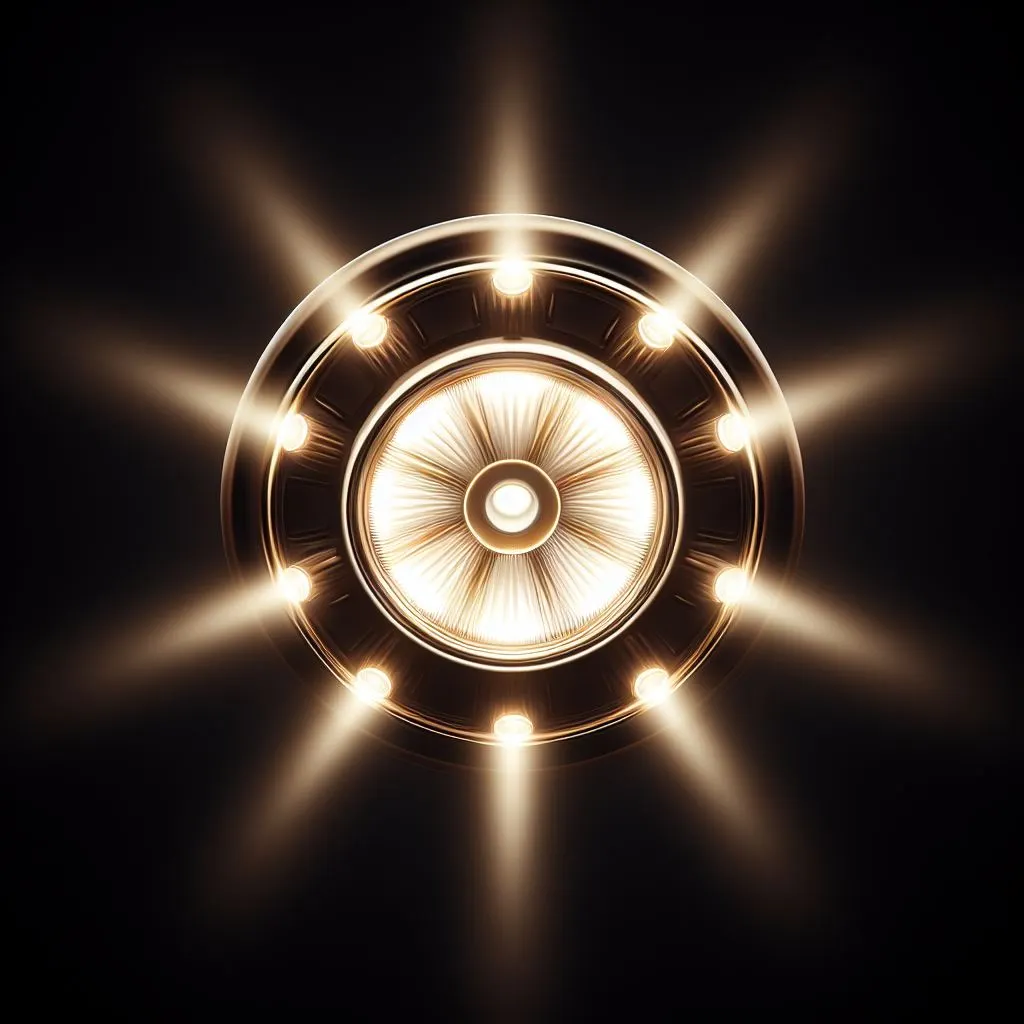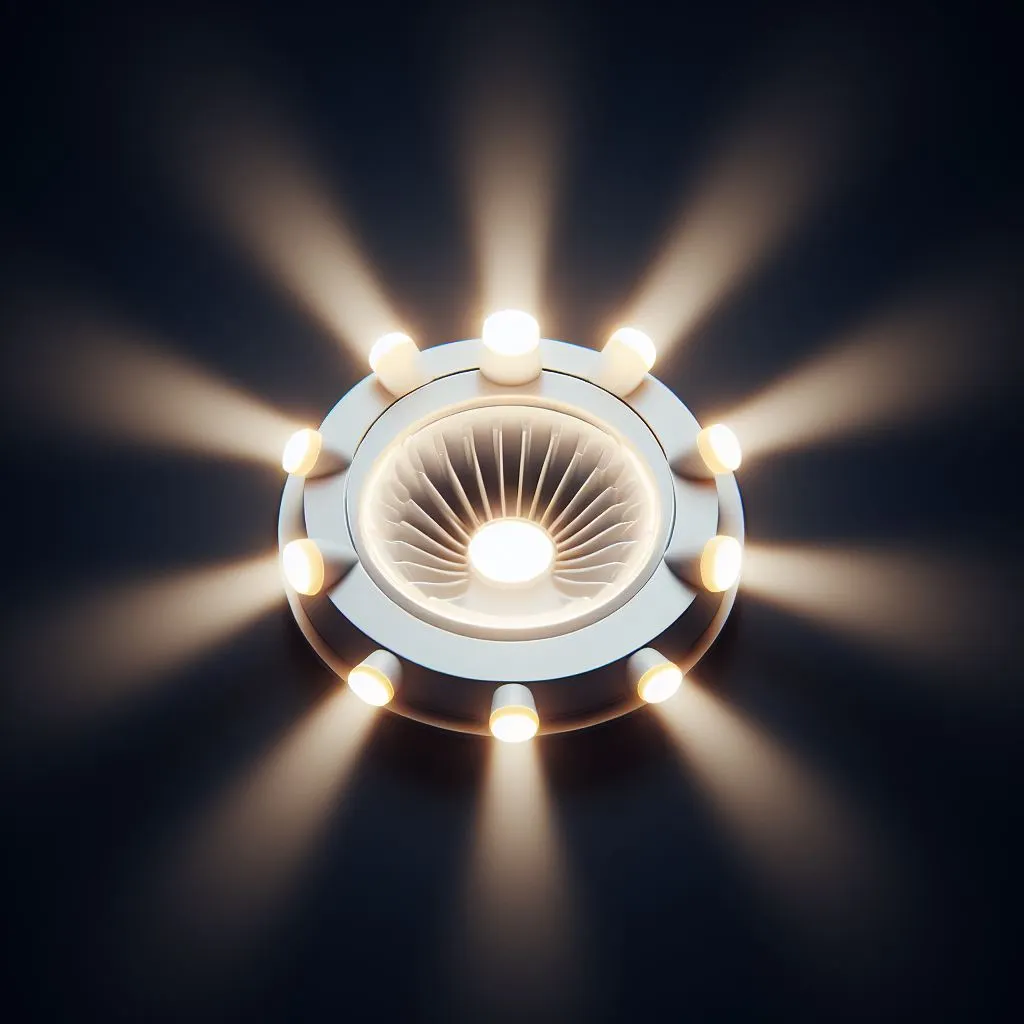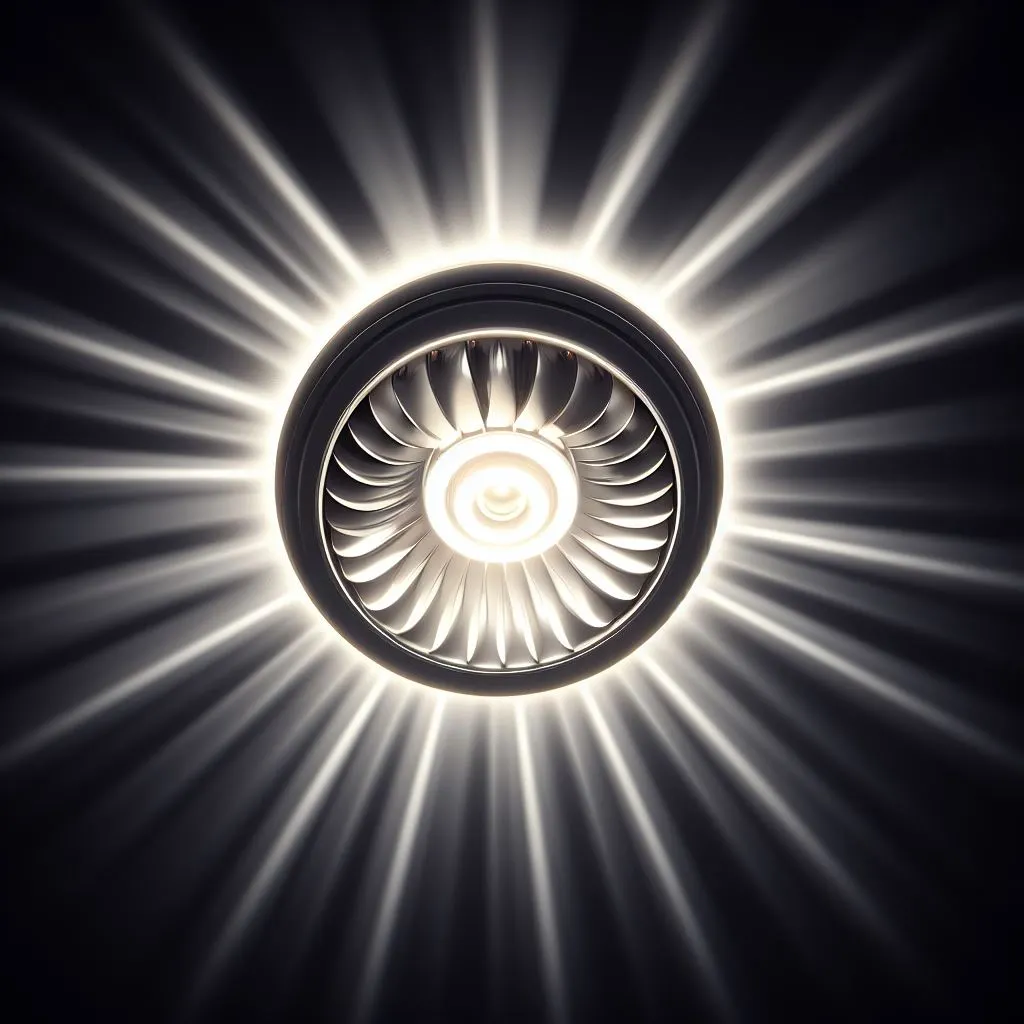Introduction to Recessed Lighting
Recessed lighting can make a massive difference in the look and feel of any room. Whether you’re looking for a softer, more calming atmosphere or looking to do some serious entertaining, recessed lighting is a great way to set the mood.
It also is a powerful tool to focus attention on specific areas in the room by highlighting art or architectural features.
In this guide, we will cover all the basics of recessed lighting, from understanding the different types available to calculating the number of lights needed for your space.
We’ll talk about where to place your lights for maximum impact and how to set up lighting settings for different occasions. And finally, we’ll cover some important safety considerations to ensure your installation goes smoothly.
Beginner’s Basics: What is Recessed Lighting?
Recessed lighting is an increasingly popular option for interior lighting, offering a sleek and modern look. These fixtures are installed in the ceiling or wall, providing directional light to illuminate specific areas. Recessed lighting comes in various shapes and sizes, allowing you to customize your lighting to suit your space.
The most basic measurements to consider when choosing recessed lighting are the size of the fixture (width and height), the wattage of the bulb, and the type of bulb (LED, halogen, or fluorescent).
It is essential to choose bulbs that will provide the right amount of light without over-lighting the room.
Another thing to consider is the trim size, which determines how the fixture will fit in the hole you make in the ceiling or wall. Trim sizes come in two different types – shallow and deep.
The external trim size is designed for installation near the rafters at the top so it won’t protrude too far down into the living space. In contrast, deep trim sizes are intended for installation further away from the rafters in the ceiling.
Read Also: Identifying & Solving Common Problems With LED Lighting
How to Determine Room Size
Installing the correct number of recessed lights for a room is an essential part of creating the perfect environment. Before determining how many lights you need, measure the size of the room or rooms you wish to install lighting.
When measuring your room, you should take into consideration the shape of the room, the size of the furniture, and the level of lighting strength required.
Different conditions, such as square, L-shaped, or open plan, can be more challenging to calculate the required number of lights, while more oversized furniture, such as beds or sofas, may cause shadows and need extra lighting.
When measuring your room, it can be helpful to divide the space into sections. Start by measuring the length and width of each section, then follow this up with the height of the ceiling.
Before finalizing your measurements, include any built-in items, such as wardrobes or cupboards, as these can affect the lighting needed.
Once your measurements have been taken, it’s time to calculate how many recessed lights are required for your room. Factors such as the size of the room and the type of light being used will affect the number of lights you need.
Read Also: Do LED Bulbs Leave an Unappealing Odor?
Calculating the Number of Lights
Knowing how many lights you need for a specific room is crucial in achieving the proper lighting for any space. It’s essential to first measure the size of your room before deciding on several recessed lights.
This can be done by measuring the length and width of the room and then calculating the total square footage.
Once you know the size of your room, you can determine the number of recessed lights needed. Generally, one morning should be installed for every 8-9 square feet of the space. For example, if your room is 12ft x 12ft, the total square footage would be 144 sq ft.
To determine the number of recessed lights needed for this size of room, divide 144 by 8-9 (144/8=18 or 144/9=16), so in this example, 16-18 lights would be needed.
It is also essential to consider additional factors such as the room’s shape, furniture, and the lighting strength required when calculating the number of lights.
Additionally, it gives some examples for readers to understand the concept better. For instance, a medium-sized living room of 160 sqft would require 18-20 recessed lights. Or a bedroom of 150 sqft would need 17-19 rays.
Layout & Placement Tips for Recessed Lighting
When it comes to recessed lighting, the placement of each light is crucial for achieving the optimal look and feel in your room.
To get the perfect atmosphere, it’s essential to consider the layout of your room and the distance each light should be set from other objects.
Ideally, the lights should be placed around 6 to 8 feet apart, depending on the room size. However, if you have furniture or other objects that require extra lighting, such as a couch or bookshelf, it might be necessary to increase the distance between the lights so that the beams don’t overlap. You can adjust the distance between each light fixture to create a more visually exciting effect.
When deciding where to place the lights, consider the height of your ceilings. Most experts recommend placing the fixtures about 7 to 8 inches from the top. This helps create an even and subtle glow while avoiding the direct shine of the bulbs.
It’s also essential to take into consideration where the power outlets are. You should always plug the lights into the nearest outlet and make sure the cords are not in the way of any potential hazards.
If the power outlets are too far away, you may need to have a professional come in and install additional wires.
Finally, ensure all recessed lighting in the same room is the same type and strength. This helps create a consistent overall lighting effect.
Read Also: Busting the Myth: Can LED Bulbs Explode?
Lighting Settings
Customizing the lighting in your room can create a setting that is perfect for any occasion. You should dim the lights for a romantic dinner or brighten them when reading or working.
Different environments can be achieved through dimmable lighting, which can make a massive difference in the atmosphere of your room.
Dimmable bulbs allow you to adjust the brightness of your lights to your desired level, which ensures that you can always get the perfect lighting for the occasion.
If you are entertaining, you can dim them for a more relaxed and cozy atmosphere. If you’re studying or working, you can brighten the lights to give you the focus and energy you need.
For a classic look, you can also install recessed lighting with on/off switches. This lets you quickly turn the lights on and off without adjusting the brightness.
While this gives you less control over the intensity of the lights, it still allows you to switch from a bright light to a dim one in just a few seconds.
No matter what kind of lighting fixtures you choose, you can create a variety of atmospheres by adjusting the intensity of your lights. With dimmable bulbs, you have even more control over the room’s brightness—so you can be sure to create the exact atmosphere you want.
Read Also: Glowing Reviews: 15 Best Light Bulbs For Exposed Fixtures
Safety Considerations
When it comes to recessed lighting, safety is a must. It is essential to ensure that the lights are installed correctly and that they are not too close to furniture, walls, or other objects in the room to avoid potential hazards. Here are some safety tips and best practices when installing or using recessed lighting.
- Make sure to read the instructions carefully before beginning installation. If you need more confidence in installing the lights yourself, hire a professional.
- Keep lights away from combustible materials such as curtains, furniture, and rugs.
- Check the wiring to ensure it is up to code and safe. If you need more clarification, hire an electrician to inspect it.
- Never overload an electrical circuit. Make sure the maximum wattage for each course is within the maximum.
- Be mindful of the heat produced by the lights. Do not put recessed lights too close to combustible materials, and never install them in areas affected by steam or high humidity.
- Make sure the insulation around the fixtures is rated for the heat produced, as it can catch fire if it is not fire-rated.
- Keep the fixtures clean to avoid a buildup of dirt and dust, which can be a fire hazard.
These safety tips and best practices will help ensure your recessed lighting is installed and used safely and correctly. If you have any questions or concerns, contact a professional for help.
Conclusion
When deciding how many recessed lights you need for a particular room size, it is essential to consider several factors, such as the room shape, size of furniture, lighting strength required, and the room layout.
The number of lights can be calculated by taking the square footage of the total area and dividing it by the desired wattage. It is also essential to consider where the lights should be placed in the room and the different settings available to customize the lighting for specific occasions or activities.
Lastly, proper safety precautions should be taken when installing and using recessed lighting to avoid potential hazards.
With this guide, readers should now have a good understanding of how they can install the correct number of recessed lights to get the optimal lighting for their home. For more information on recessed lighting, check out the resources provided below!
FAQs about Recessed Lighting
What is recessed lighting?
Recessed lighting is a type of lighting fixture installed in the ceiling or other surfaces. The lights illuminate while remaining flush with the surface, giving rooms a more modern look.
What types of fixtures are available for recessed lighting?
Recessed lighting fixtures come in various sizes and styles, with some suited for specific rooms or applications. Some types include LED, halogen, incandescent, and compact fluorescent.
How do I determine the size of the room to figure out how many lights are needed?
To determine the size of a room, you need to measure the length and width of the room. There are also other factors to consider, such as the shape of the room, the size of the furniture, the type of lighting needed, etc.
How do I calculate the number of lights needed for my room size?
Generally, one light per 4-5 square feet of space is recommended. However, this can vary based on the individual requirements of the room. For example, a large living room may require more light than a small bedroom.
What are some tips for the layout placement of the lights?
When installing the lights, it is essential to consider the height of the ceiling, the distance between other objects, and the room’s layout. These factors will help determine the most optimal placement for the lights.
What are some settings I can use to customize the lighting for different occasions or activities?
Settings such as dimming and brightening can be used to customize the lighting depending on the occasion or activity. For example, brightening the lights for reading or working and dimming them for entertaining.
What safety considerations should I consider when installing recessed lighting?
Safety is an important consideration when it comes to recessed lighting, and there are a few best practices to follow, such as ensuring the lighting fixtures meet local safety codes, double-checking the wattage of bulbs, and using caution when working near electricity.





1 thought on “Brighten Your Space: How Many Recessed Lights Do I Need”